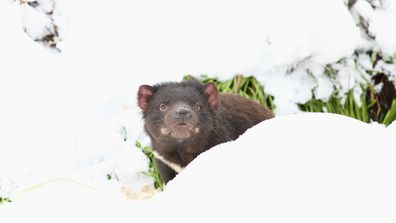With all the heavy rainfall that’s hammered the east coast, a subsequent “large amount of growth” in grassland areas has also followed, meaning there’s still a significant risk of danger on those hot summer days.
In fact, they’ve got 80.
:saturation(1.46)/https%3A%2F%2Fprod.static9.net.au%2Ffs%2F94c06e2f-1484-4df9-9ea7-88d42c9036ac)
The weapon? Grazing goats.
“RFS was prompted to look at a range of alternate hazard reduction methods, one of them being grazing – and goats are known for wanting to have a go at anything,” Troy Gersback, RFS firefighter and inspector, told Weekend Today.
“It seemed like the most reasonable and logical solution to put them in the field.
“It’s a fantastic technique that we are using here that is really allowing the RFS to continue its preparations for the community – rain, hail or shine.”
The herd, which is currently 80 strong, have been deployed to Mudgee and its surrounds, where they have already munched their way through 16 sites so far.
Grazing goats are actually a popular hazard reduction technique used extensively overseas in the US, Canada and Europe.
:contrast(5):saturation(1.28)/https%3A%2F%2Fprod.static9.net.au%2Ffs%2Fe08196b5-70b5-49ed-bdab-1d469d68ab6f)
Despite the announcement of a record-breaking third consecutive La Niña system, Gersback said that due to the nature of the landscape, the threat of bushfires remains “ever-present”.
“The threat is ever-present and we have actually seen that here in the Mudgee region in the last couple of weeks we have had a number of large running grass fires running through paddocks that are in two inches of deep water,” he said.
“But yet the grass fires are moving across the dry grassland on top. The potential is certainly there and the threat is always still present.
“Unfortunately the rain that we have had has kept that risk at bay, but going into another fire season which starts on October 1, we are only a couple of weeks away we still do see that potential there.”









